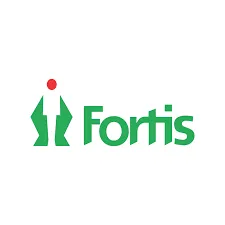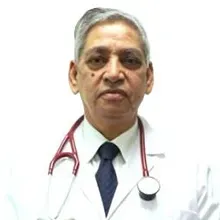Dr. Ashok Seth is one of India's top interventional cardiologists. With a robust 32-year career, he is recognized for having completed 20,000 angioplasties and more than 50,000 angiograms. He holds the record for performing the most angiographies and angioplasties worldwide, according to the
"LIMCA" Book of Records. The Asia-Pacific region's first cardiologist to conduct an angioscopy and direct atherectomy is Dr. Seth. Additionally, he is one of the few cardiologists in the world qualified to do the surgery. One of the youngest recipients of a Doctor of Science (D.Sc.) Causa from Banaras Hindu University is Dr. Seth. He was also one of the youngest doctors from outside the country to receive fellowships from all three Royal Colleges: London, Edinburgh, and Ireland.
The President of India has conferred the highest national awards of "Padma Bhushan '' and "Padma Shri '' on Dr. Seth. He was elected to the Board of Governors of the Society of Cardiac Angiographies and Intervention (USA) as the first cardiologist from Asia. Dr. Seth has successfully educated more than 350 cardiologists both in India and overseas. He has also given demonstrations of cutting-edge angioplasty procedures at more than 400 conferences and seminars held in countries around the Asia-Pacific. He has published more than 250 articles in a number of notable journals, both domestically and abroad.
Complex Angioplasty Rotablation : It is simply a drilling method that clears the interior of the arteries to allow the balloon and stent to flow more readily. A senior consultant interventional cardiologist performs the procedure. This treatment is performed on a very limited basis by cardiologists in Southeast Asia.
ECMO : Extracorporeal membrane oxygenation (ECMO) is a sort of mechanical life support that can assist a person whose lungs and heart aren't working properly. ECMO constantly removes blood from the body and routes it through devices that provide oxygen and eliminate carbon dioxide.
Fractional Flow Reserve (FFR) : The fractional flow reserve (FFR) is calculated by dividing the maximum possible blood flow in a diseased coronary artery by the theoretical maximum flow in a normal coronary artery. An FFR of 1.0 is typically considered normal.
Noninvasive Cardiology : Cardiology that doesn't involve skin cutting or piercing is known as noninvasive cardiology. This often focuses on the use of techniques to identify cardiac issues, like chest x-rays or echocardiography with electrocardiogram.
Complex PCI : It is a non-surgical procedure called percutaneous coronary intervention (PCI, formerly known as angioplasty with stent) in which a small device called a stent is inserted into a blood vessel in the heart that has been narrowed by plaque buildup.
Angiogram : A diagnostic technique called an angiogram utilizes X-ray pictures to check for blockages in the blood vessels (veins or arteries). The healthcare practitioner can observe how blood flows through blood vessels at particular points on the patient’s body by performing an angiography test.
Angioplasty : It is a surgical treatment in which a small wire mesh tube called a stent is inserted into the artery. To promote better blood flow, the stent is left in place permanently.
Cardiothoracic and Vascular Surgery : Vascular surgery deals with the operation on blood vessels and veins that are not connected to the heart, whereas cardiothoracic surgery deals with the operation on the heart, lungs, esophagus, and other organs in the chest.
Cardiac OPD Procedures : Cardiac OPD operations are those that are conducted on a regular schedule and do not require hospital admission. History taking, examination, blood tests, the electrocardiogram, event evaluation, cardiac stress testing, electrophysiological studies, and other procedures are conducted in the cardiac OPD.
Minimal Invasive Cardiac Surgery : It is a surgical procedure in which instead of cutting through the breastbone as in open-heart surgery, minimally invasive cardiac surgery entails making tiny incisions on the right side of the chest to reach the heart between the ribs. A number of cardiac problems can be treated with minimally invasive heart surgery.
Congenital Heart Repairs : Open surgery is often used to correct congenital heart abnormalities. However, in rare situations, similar treatments can be performed using minimally invasive approaches.
Cardiothoracic and Vascular Surgery : Vascular surgery deals with the operation on blood vessels and veins that are not connected to the heart, whereas cardiothoracic surgery deals with the operation on the heart, lungs, esophagus, and other organs in the chest.
Robotic Cardiac Surgery : Robotic cardiac surgery involves doing heart surgery through relatively tiny chest incisions. Surgeons can perform cardiac surgery that is far less invasive than open heart surgery by using small devices and robot-controlled equipment.

















